Kingdom of Svenland
Svenland, also the Kingdom of Svenland is a Self Declared Nation, According to the Montevideo Convention, based on an Arctic Island Within North Eastern Greenland. Its territory can be found within formerly known Shannon Ø Island.' It also has 2 Overseas Colonies in Ireland and an Antarctic Territorial Island. It has a predominantly temperate-cool climate and a large territorial area making it of a notable size among micronations in Northern Europe.
with an estimated population of 20 official citizens. Its capital Glaisacius, located in the Colony of Chroistacht. Svenland is a micro nation located on a piece of land with rich culture and history, dating back to Celtic and Norse heritage.
Svenland Swveire | |
|---|---|
| Kingdom of Svenland Riokt za Swveire (Svelandic) | |
| Motto: For Our Heavenly Peace | |
| Anthem: Kailec God teio lau Rio | |
 Location of Svenland next to (Greenland) | |
| Sovereign state | |
| Formation | 2015 |
| Capital and largest city | Casneacta |
| Official languages | Svenlandic
|
| Demonym(s) |
|
| Government | Constitutional Monarchy |
| King Richard Fitzgerald I | |
• Taosjok | TBD |
| Legislature | Parliament of Svenland |
| Area | |
• Total | 1,258.5 km2 (485.9 sq mi) |
| Population | |
• 2022 estimate | 15 |
• 2022 census | pending |
| Currency | Orkos |
| Time zone | GMT |
• Summer (DST) | Eastern European Summer Time|EEST GMT |
| Date format | DD/MM/YYYY |
| Driving side | left |
| Postal Code | SVN |
| Website | Official Website |
Geography:
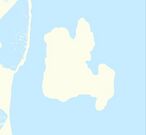
(Mainland Svenland) The (1217km²) Island of Svenland bordering North Eastern Greenland national park in the unincorporated area is known previously as (Shannon Ø) with wide Arctic open landscapes blanketed by snow partially during the year, as well as the sea ice surrounding the mainland for a number of months. The highest elevated mountain being "Meyerstein Bjerg" on the southern coast. There are many natural bays enclosing the 3 counties with largest being "Yunukaot bay" in the east coast. The Mainland is uninhabited however the government hopes to develop further here or on a similar territory in the future to promote our culture and community as an Independent sovereignty. It is currently managed by the Government and each of the Counties is managed by the Administrative Regional Council Chieftain Protectors.

(The Colony Isle of Torvjalo) The (0.02km²) Isle, features a number of two connecting islands via a tidal causeway and a surrounding rock reef, which are within Strangford lough bordering the waters of Northern Ireland which is home to a temperate climate that often welcomes an array of bird species and marine animals including seals and basking sharks, along side the frequent mooring sailing vessels within the waters , and is managed by the Svenlandic Navy and the A.R.B through the Current Chief Protector Mr Bredenoord
.
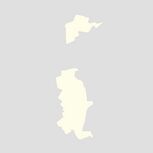
(The Colony of Chroistacht) The (1.14km²) northern territory is divided into two provinces (Noord) and (Zuid) bordering Northern Ireland home to the Modern Svenlandic Capital, Parliament, royal residence and the first football club within Svenland. The Provinces runs along The River Glaisacius which is situated on the western border and is the primary provider of fresh water and fish to the Chestuo Port. it is home to citizens partially during the year and tourists in the summer months across the two regions, and is managed by the Svenlandic Marines and River Guard Through the Chief Protector, Mr Brown.
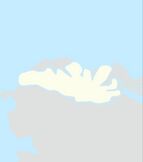
(The Antarctic Territory of Ljonbyrd Isle) The (15,700km²) Antarctic Overseas Territory Island in the Kingdom of Svenland. is an ice-covered, glacial island, 215 km (134 mi) long, 90 km (56 mi) wide. The island was discovered from the air by Rear Admiral Byrd on February 27, 1940, lying a short way off the northwest end of Ellsworth Land, Antarctica. The island is divided by the Sjlive Agskoller Mountains , a range of peaks and Nunataqs, with many glaciers and fjords across range. it is currently home to a diverse array of animal and marine life and is managed by the Svenlandic Navy and S.A.A.F ( Svenlandic Arctic Antarctic Federation) Through the Chief Protector, Mr Fitzgerald.
Administrative Regions
History
The Introduction of the Kingdom of Svenland can be traced to the establishment of the First Lordship in the Kaniszh Valley in the year 2015. Its subsequent evolution characterized by the benevolent rule of Dutch and Native Irish settlers across the Northern European territories.

The maturation of this old Kingdom led to the formation of the Modern Svenland in October of 2020 with a wide history and culture, coinciding with the commencement of the reign of Crown King Richard I. Following the winter of the same year witnessed the assertion of independence, a seminal moment that galvanized efforts to cultivate the distinctive Svenlandic cultural milieu on the European microstate territories and arctic region.
Under the sagacious stewardship of King Richard I, Svenland embarked on a diplomatic and maritime odyssey. International missions were undertaken, including the reformation of overseas territories such as the Colony Isles of Torvjalo, Colony of Chroistacht divided into two Enclaves called (Noord Chroistacht) and (Zuid Chroistacht), which is home to the Capital and Parliament Cabinet. These initiatives strategically facilitated in the European Colonies, including marine trade and business rendered the Kingdom an alluring destination for a visitors annually especially with a presence of the Kingdoms two colonies in North Western Europe.
Svenland takes profound pride in its cultural heritage, derived from the neighboring Nordic and Celtic Cultures around us. The citizenry often can be seen to observe various festivals and events throughout the calendrical year, showcasing a rich tapestry of traditions and local customs adapted from local history. The kingdom's Svenlandic language is observed an expression of cultural diversity and font of knowledge transmission leading to the construction of The National City of Glaisacius University which was formed in 2020 as a Debating Union.
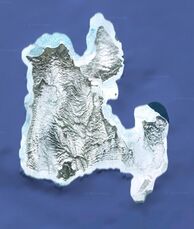
Within the borders of The Svenlandic European Territories you can visit a number of landmarks, such as the Glaisacius City which derives its name from the Surrounding Glaisacius River, The Valley Log Cabins, The Famous Sancherdor Beaches and diverse reefs of Torvardo Island down river, The National stone monuments seen across all of Svenland, Forests and the Ski Slopes of Noord Chroistacht. The annual calendar is punctuated with numerous festive holidays, with noteworthy mentions including the Svenlandic Summerfest held in August across all of the Kingdom and the observance of the Winter Torch Night in January. Moreover, the forthcoming SWG 2024 'Svenlandic Winter Games' is anticipated promising a comprehensive display of national Winter Sports ranging from Ice Track Sledding to Skiing, Snowboarding, and Ice Hockey.
The sovereign proclamation by King Richard, marking the formal recognition of Svenland, precipitated a sequence of notable developments by an array of Notable Svenlandic Figures, both cultural and institutional. These transformative events have indelibly shaped the nation's identity, standing today as a testament to the fortitude, ingenuity, and sporting prowess of its citizenry. In the annals of its diverse geography and history across the Arctic and Northern Europe, Svenland emerges as a compelling narrative, embodying resilience and cultural richness through each and every one of its citizens, whom carries the Flame in the Torch.
Defence Forces
The Royal Court of Justice is responsible for National Law. Jurisprudence operates on a civil law legal system, crimes being voluntary tried before the Royal Court, depending on the severity of the offence and all laws equate to measures of guidelines which is required to possess Svenlandic Citizenship and Non tresspassing grants on Crowns land based grounds.
The Svenlandic Defence forces, ceremonial and self defence mission/task training, consisted of 4 regiments, (I Crown Regiment of Guards) , acting as standing military of the Kingdom, and the (II Crown Regiment of Politze), acting as gendarmerie and handling all police duties, (III Crown Regiment of Naval Defence) representing all watercourse patrol through boats from sea or river duties, and the (IIII Crown regiment of Air Defence) which defends and surveys the landscape above for national maps
Foreign Relations

Svenland engages in diplomatic relations with various other Micronations and actively seeks to participate in the broader global micronational community. It emphasizes cooperation, mutual respect, and peaceful coexistence with its neighbors, fostering an atmosphere of goodwill and understanding. The Foreign Relations of the Svenland were implemented by the Secretary of Foreign Affairs. The power to grant official diplomatic recognition of sovereignty lies primarily with the Crown Seat and King Richard but was made on the advise of the Foreign affairs office of State. Although Svenland is not yet internationally recognized by any member of the United Nations, it does hold formal diplomatic relations with various Self Declared Nations. Foreign relations are influenced by the Foreign policies of Svenland Managed by the [1]Ministry of Foreign Affairs (MOFA).
Government and Politics
The Monarch works alongside the advisors and officials, forming the A.R.B (Administrative Regional Board) across the Kingdom and its overseas territories. The Government consists currently through an independent system of electing the leaders of the National table and Ministries through the leading (Taosjok/PM) who guides the table under the crown to cover the national government and guide policy.
The following Government Ministries are headed by ministers who comprise Government:
- Home Office - led by the Home Secretary, responsible for maintaining communication between the central government and local authorities, keeping a census of all residents and subjects of Svenland, supervising the running of the Svenlandic Recon Office (SRO) , and protecting the environment of the Kingdom.
- Treasury - led by the Chancellor, responsible for managing the income of the Kingdom through fundraising and legal fines, and for the financial policy of the Country
- Foreign Office - led by the Chief Ambassador, responsible for maintaining diplomatic relations with other nations.
- Administrative Regional Board - Led by the Chief Protectors and (Taosjok/PM), Responsible for managing the counties and overseas territories.
- Ministry of Defence - led by the Chief of Defence, responsible for the implementation of government defence policy and, together with the Treasury, the funding of the Svenlandic Defence Force.
- Ministry for Culture - led by the Minister for Culture, responsible for promoting and preserving Svenlandic culture.
- Ministry of Justice - led by the Attorney General, responsible for providing legal advice and services to the Government and supervising the running of the Crown Justice.
National Bank
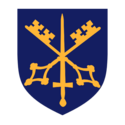
The Economy of Svenland is primarily driven by local craft and produce, with a focus on sustainable practices and local industries. The currency used in Svenland is the Umecos, and the nation aims to promote self-sufficiency while maintaining friendly trade relations with other nations within the UMEC (Umecos Zone).
The central bank has the exclusive power to issue all forms of currency, including coins and banknotes, and to regulate the production of currency by the national Bank through the UMEC monetary policy and Union Legislation.
The exchange rate is a price at which two currencies can be exchanged against each other. This is used for trade between the two currency zones. Exchange rates can be classified as either floating or fixed. In the former, day-to-day movements in exchange rates are determined by the market; in the latter, governments intervene in the market to buy or sell their currency to balance supply and demand at a static exchange rate at the Printing limits agreed upon the zone.










